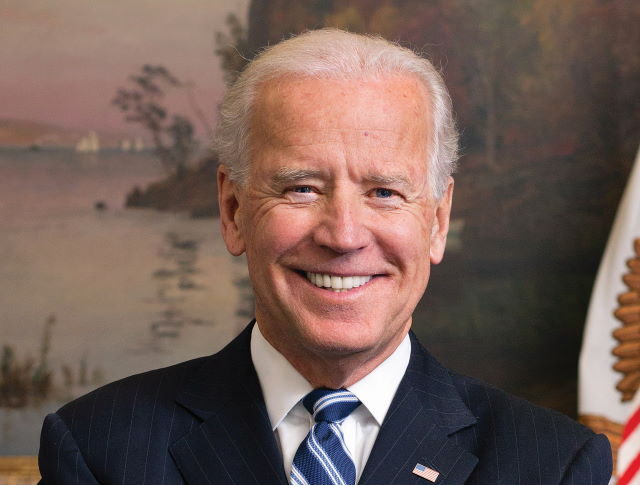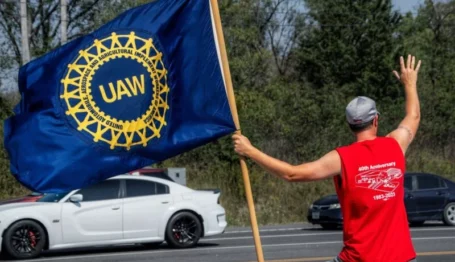Labor Watch
Core Issues in Labor Policy: Every Job a Factory Job
 Backed by institutional organized labor, the Biden administration has from day one shown that it will do its bidding. President Joe Biden’s unprecedented act of firing the NLRB General Counsel before the expiration of his term exemplifies this. Credit: David Lienemann. Public Domain.
Backed by institutional organized labor, the Biden administration has from day one shown that it will do its bidding. President Joe Biden’s unprecedented act of firing the NLRB General Counsel before the expiration of his term exemplifies this. Credit: David Lienemann. Public Domain.

Core Issues in Labor Policy (full series)
Every Job a Factory Job | Independent Contracting
Mandating the Closed Shop | Social Justice Unionism
Summary: With the Biden administration and Democratic congressional majorities entering office with the backing of organized labor as a constituency they intend to reward and strengthen, supporters of employee freedom, American entrepreneurship, and long-standing labor and employment precedents will need to be prepared to engage in debates on labor union power and policy. Just as it did the last time a Democratic federal “trifecta” emerged in 2009 to push “card check,” Big Labor has prepared an aggressive agenda to compel more workers to subsidize its aggressive, far-to-radical-Left ideological agenda.
Perhaps no special interest group benefits as much from the transition of power from the Trump administration to the Biden administration as Big Labor. The Trump administration placed union accountability to members foremost in its labor policies as exemplified by the policies adopted by its National Labor Relations Board. Many of these reverted pro-Big Labor “innovations” by the Obama-era board.
Backed by institutional organized labor, the Biden administration has from day one shown that it will do its bidding. President Joe Biden’s unprecedented act of firing the NLRB General Counsel before the expiration of his term exemplifies this.
But what is that bidding exactly? To get an idea of where the Biden administration and the Biden Labor Board will send American labor relations, one need only look at the debates in the labor space over the past several years and at Congress’s Protecting the Right to Organize (PRO) Act. Now-President Biden endorsed Big Labor’s policy wish list during the 2020 campaign.
Big Labor’s goals fall into three broad categories:
- Legal efforts to drive workers from industries unions have found difficult to organize into unions;
- Changes to the law designed to strengthen union coercive powers that were taken away from Big Labor in the mid-20th century after it abused them; and
- Further tightening of the “social justice unionism” alliance between Big Labor and the broader Left.
Every Job a Factory Job: Importing the Unionized Model
Unsurprisingly, unionization in the economy peaked in the late 1950s, when more of the workforce worked in what might be called large-employer, large-workplace, routinized work. The classic model of such work is a fitter in a car factory. Large employers often found unionized workforces simpler to administer, and routinized work lent itself to collective bargaining with rules such as pay by seniority, especially given that job tenure was longer then.
But the era of the “Three Bigs”—Big Business, Big Government, and Big Labor—declined in the late 20th century. Big Business was rocked by foreign competition, the information revolution, and the rise of the Sun Belt at the expense of the old industrial Northeast and Midwest. Big Government never went away, but its micromanagement of industries like commercial aviation, railroad freight, and telecommunications was curtailed by legislative and executive action. Big Labor, meanwhile, saw its ranks diminished by the forces rocking the Big Business on which it was a remora.
Rather than changing their offering to workers, Big Labor has responded by demanding changes to law to force modern employment into the old three bigs framework. Their lodestar in this effort has been the Justice for Janitors corporate campaign by the Service Employees International Union (SEIU) from the 1980s and 1990s (which gave liberal political nepot and later Planned Parenthood head Cecile Richards her start in activism). In that campaign, SEIU activists advanced city by city, using public relations campaigns against tenants of major buildings to compel janitorial services firms to recognize the SEIU after “card check” efforts rather than through NLRB-administered secret ballot votes of employees.
But Big Labor’s legislation to mandate recognition of unions using “card check” failed to advance during the Obama administration. An aggressive campaign to protect workers’ secret ballot—headlined by among others the late former Sen. George McGovern (D-SD)—made mandatory card check politically radioactive, so organized labor largely discarded this convenient “kick me” sign. While the PRO Act contained an expansion of card check by allowing the NLRB to declare a union established if it found management misconduct during an election campaign, it lacked the mandatory card-check provision of the Obama-era bill.
Instead, Big Labor has developed a two-pronged approach to importing the three-bigs factory-floor model to every workplace in America. Prong one is redefining “joint employer,” the legal doctrine determining who bears liability for workplace administration, in order to make national branding companies (most prominently McDonald’s) liable for the workplace administration errors of their independent franchisees. Prong two is reclassifying as many independent contractors as Big Labor can get away with as legal employees subject to mandatory dues payments and monopoly bargaining.
Joint Employer
Traditional joint employment doctrine limits the reach and power of labor unions.
How Joint Employer Has Worked. Labor relations doctrine of joint employment has traditionally relied on the principle of “direct supervision” in determining who bears liability for an employee’s workplace situation. In essence, the business responsible for employment was any business that had direct control over an employee’s hiring, firing, wage rates, and job description (known as “essential terms of employment”). So, while the name on the storefront might say “Sonic Drive-In,” the legal employer who controlled all those things might be an entity like Leeshain Enterprises, the Sonic franchisee for which I worked in my college summers.
Leeshain controlled the employment terms; Sonic was not liable. If some union tried to organize the store and Leeshain committed a labor-law infraction, only Leeshain could be punished. Likewise, if a union organized some Sonic restaurants controlled by a different franchisee or the corporation itself, that had no bearing on the situation at Leeshain Enterprises’ stores.
How Big Labor Wants It to Work. But for organized labor, going from franchisee to franchisee and organizing store after store is difficult, especially in a business like fast food in which employees come and go at a rapid clip. Better for the SEIU to run its “corporate campaign” playbook against the big national company that does business in a bunch of left-wing jurisdictions and is therefore at least somewhat inclined to play nice and compel it to recognize a union by card check.
Here traditional joint employment doctrine creates a problem for Big Labor: The national branding company has no skin in the employment-relations game and recognizing a union for franchised restaurants might even create a joint employment relationship where none previously existed. So the union can scream and holler and file shareholder resolutions and get New York or Chicago city officials on the make to holler at union rallies, and it will amount to bupkis.
But if the union could change joint-employer rules, then all that hollering could amount to something. Since the branding company (in our example, Sonic Drive-In) would already be on the hook, they would need to take more active management of employment. Rather than facing thousands of union lawsuits and unfair labor practices charges of varying levels of merit for the actions of franchisees, the national branding company might prefer to cave to the union, conditioning a franchise agreement on a card-check agreement with the union. At the end of the line? Tens, if not hundreds, of millions of dollars in dues and fees for the union.
The Obama government adopted a union-friendly approach to joint-employer doctrine through National Labor Relations Board case law. While the Trump government tried to use the NLRB to reverse that decision, a Biden government could reverse the Trump moves at the NLRB. Further, the PRO Act, Congressional Democrats’ proposal to rewrite labor law to empower Big Labor, would codify the SEIU-backed Obama-era standard.
Consequences. Adopting organized labor’s view of joint employment would throw every franchise agreement and contractor relationship into jeopardy the moment such legislation takes effect, threatening the dreams of small business owners already battered by the COVID pandemic and accompanying government tyranny. Workers seeking jobs in franchised fields, commonly short-term or entry-level work, would be forced to pay steep union initiation fees and forced dues.
In the next installment, look at how the PRO Act would subject independent contractors to forced unionization.



